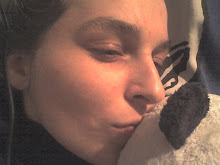
body dysmorphic disorder

[...]
Symptoms
Common symptoms of BDD include:
- Obsessive thoughts about (a) perceived appearance defect(s).
- Obsessive and compulsive behaviors related to (a) perceived appearance defect(s) (see section below).
- Major depressive disorder symptoms.
- Delusional thoughts and beliefs related to (a) perceived appearance defect(s).
- Social and family withdrawal, social phobia, loneliness and self-imposed social isolation.
- Suicidal ideation.
- Anxiety; possible panic attacks.
- Chronic low self-esteem.
- Feeling self-conscious in social environments; thinking that others notice and mock their perceived defect(s).
- Strong feelings of shame.
- Avoidant personality: avoiding leaving the home, or only leaving the home at certain times, for example, at night.
- Dependent personality: dependence on others, such as a partner, friend or family.
- Inability to work or an inability to focus at work due to preoccupation with appearance.
- Decreased academic performance (problems maintaining grades, problems with school/college attendance).
- Problems initiating and maintaining relationships (both intimate relationships and friendships).
- Alcohol and/or drug abuse (often an attempt to self-medicate).
- Repetitive behavior (such as constantly (and heavily) applying make-up; regularly checking appearance in mirrors; see section below for more associated behavior).
- Seeing slightly varying image of self upon each instance of observing a mirror or reflective surface.
- Perfectionism (undergoing cosmetic surgery and behaviours such as excessive moisturising and exercising with an aim to create an unattainable but ideal body and reduce anxiety).
- Note: any kind of body modification may change one's appearance. There are many types of body modification that do not include surgery/cosmetic surgery. Body modification (or related behavior) may seem compulsive, repetitive, or focused on one or more areas or features that the individual perceives to be defective.
Compulsive behaviors
Common compulsive behaviors associated with BDD include:
- Compulsive mirror checking, glancing in reflective doors, windows and other reflective surfaces.
- Alternatively, an inability to look at one's own reflection or photographs of oneself; also, the removal of mirrors from the home.
- Attempting to camouflage the imagined defect: for example, using cosmetic camouflage, wearing baggy clothing, maintaining specific body posture or wearing hats.
- Use of distraction techniques: an attempt to divert attention away from the person's perceived defect, e.g. wearing extravagant clothing or excessive jewelry.
- Excessive grooming behaviors: skin-picking, combing hair, plucking eyebrows, shaving, etc.
- Compulsive skin-touching, especially to measure or feel the perceived defect.
- Becoming hostile toward people for no known reason, especially those of the opposite sex, or same sex if same-sex attracted.
- Seeking reassurance from loved ones.
- Excessive dieting or exercising, working on outside appearance.
- Self-harm
- Comparing appearance/body parts with that/those of others, or obsessive viewing of favorite celebrities or models whom the person suffering from BDD wishes to resemble.
- Compulsive information-seeking: reading books, newspaper articles and websites that relate to the person's perceived defect, e.g. hair loss or being overweight.
- Obsession with plastic surgery or dermatological procedures, often with little satisfactory results (in the perception of the patient).
- In extreme cases, patients have attempted to perform plastic surgery on themselves, including liposuction and various implants with disastrous results.
- Excessive enema use (if obesity is the concern).[...]http://en.wikipedia.org/wiki/Body_dysmorphic_disorder





0 Comments:
Post a Comment
Subscribe to Post Comments [Atom]
<< Home